Unit 1: Biological Bases of Behavior (copy) (copy)
Source: AP Classroom Course Guide, Unit 1
1.1 Interaction of Heredity and Enviroment
Nature - Genetics
Nuture - Everything Else
It’s not nature or nurture, it’s nature AND nurture
Epigenetics - Enviroment can alter our genetics
Identical Twins - same DNA & sex, one egg (monozygotic), raised in separate enviroments, similarities are due to genetics
Fraternal Twins - Different DNA, can be same or different sexes, no more genetically similar than non-twin siblings, two eggs (dizygotic), raised in separate enviroments, similarities due to enviroment
Heritability - amount of variation among individuals that we can attribure to
1.2 Overview of the Nervous System
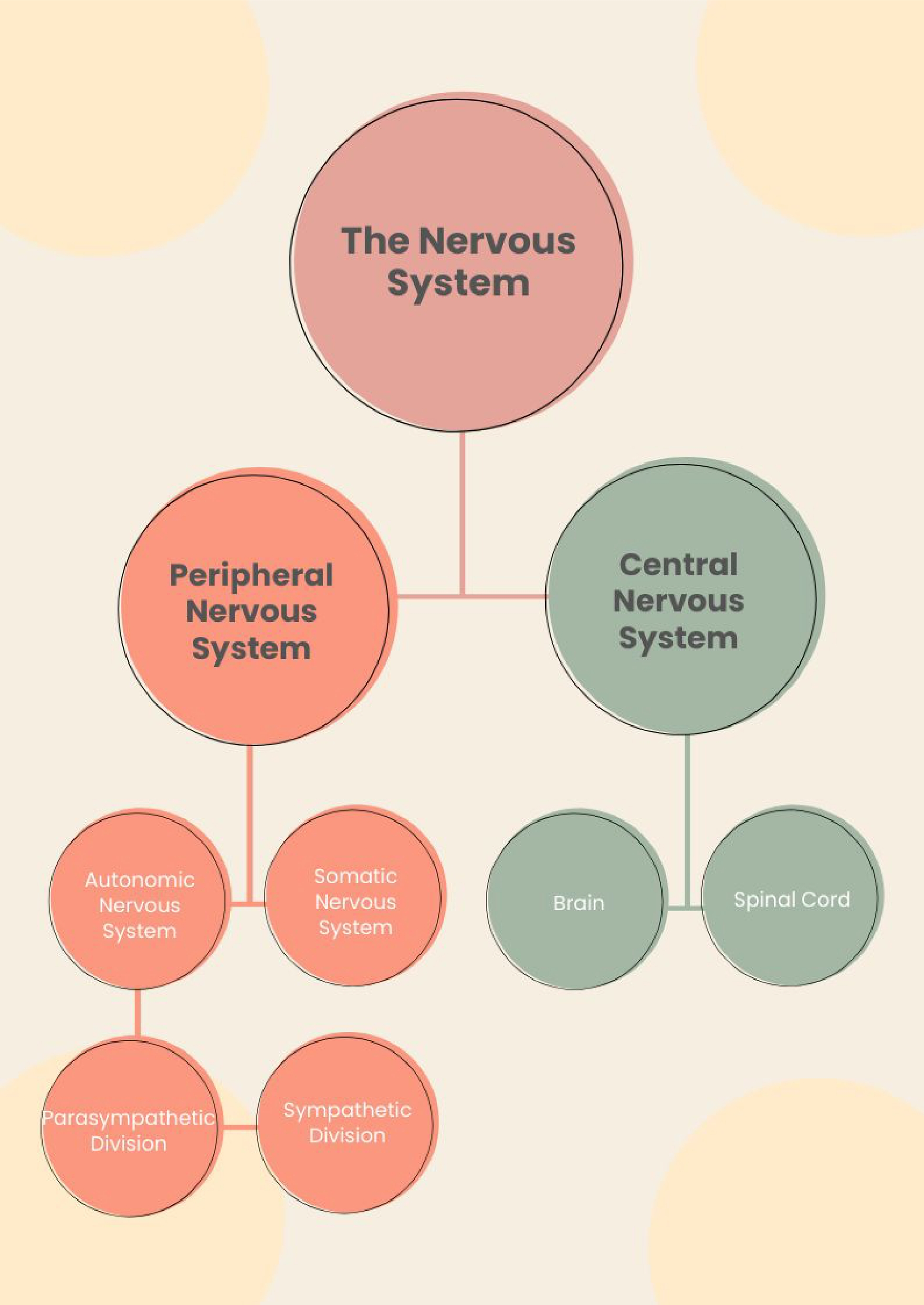
Somatic NS - Voluntary Movements
Autonomic NS - Involuntary Movements
Sympathetic - Fight or Flight
Parasympathetic - Rest; Parasympathetic as in Parachute, it slows down your system

1.3 The Neuron and Neural Firing
Neuron Anatomy
What are Neurons?
Building blocks of the Nervous System
There are several different types
Jobs
Receive messages
Carry messages
Send messages
A neuron works in milliseconds
Neural impulses travel as fast as 330 mph
Main 3 parts of a Neuron:
Cell Body
Axons
Dendrites
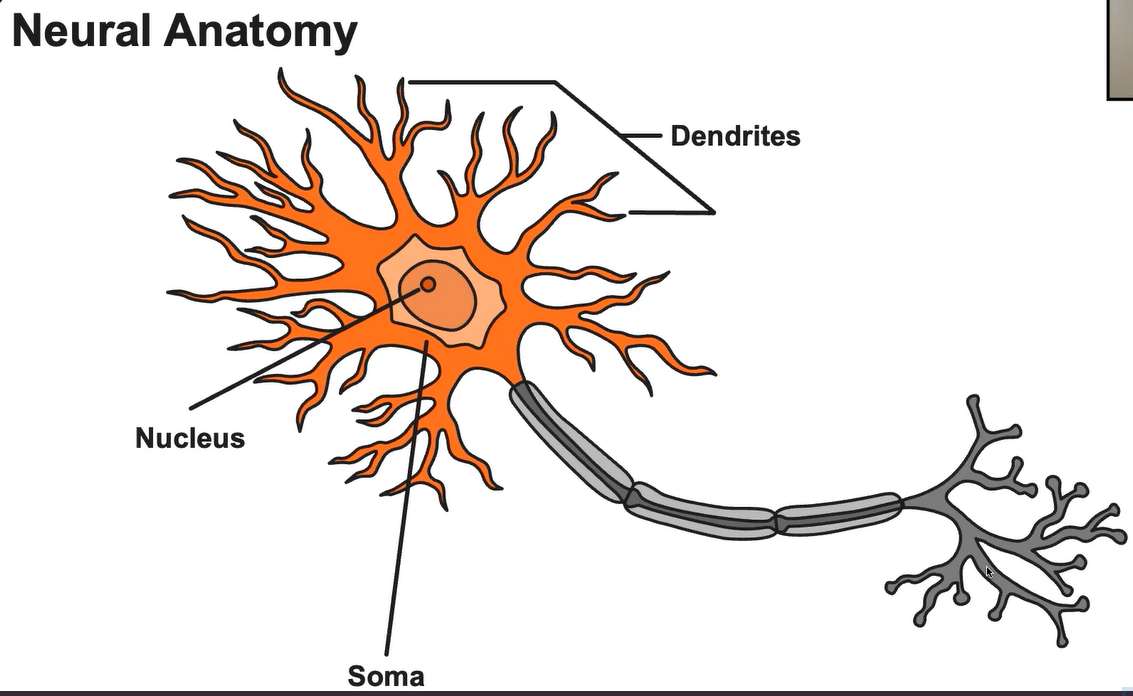
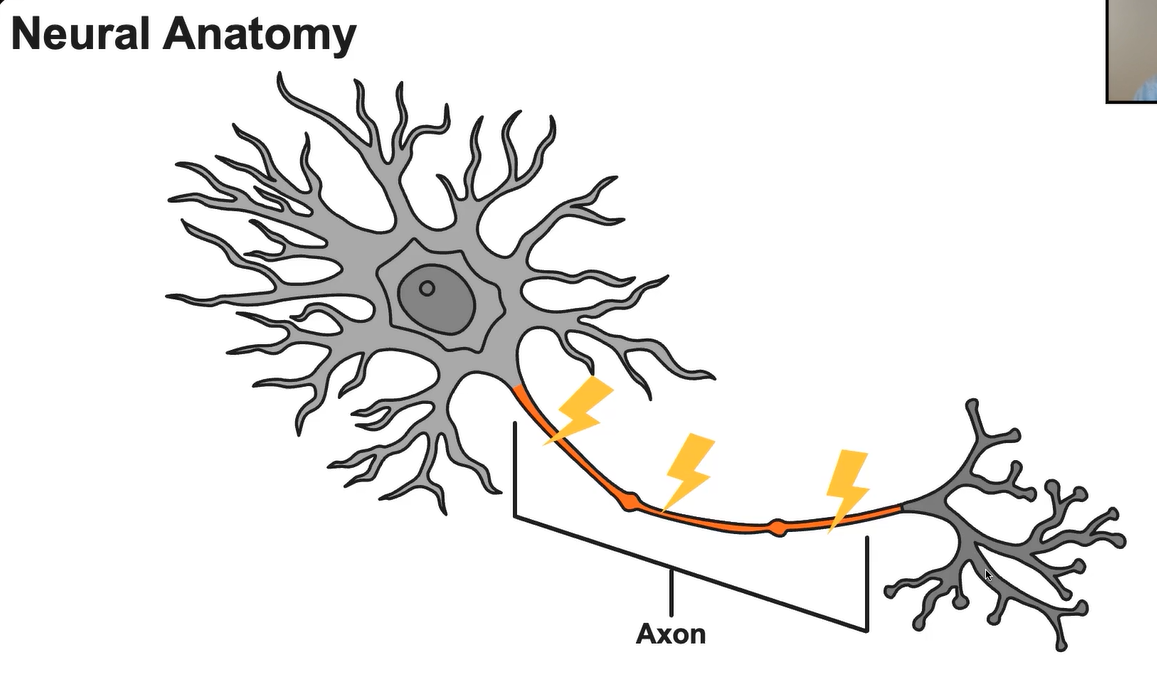
Some Axons have a Myelin Sheath
What is a Myelin Sheath?
A fatty substance encasing most neurons in the brain
Protects and insulates the axon
Speeds up transmission of nerve impulses
Many disorders are linked to problems in the creation or deterioration of myelin
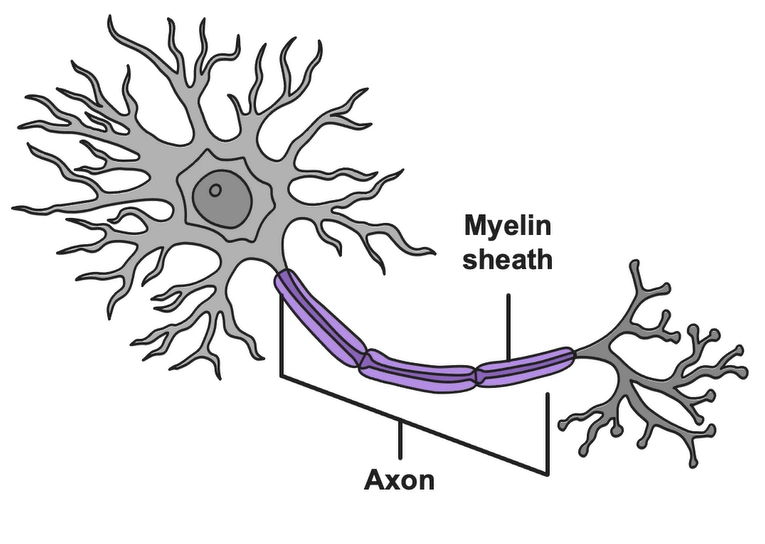
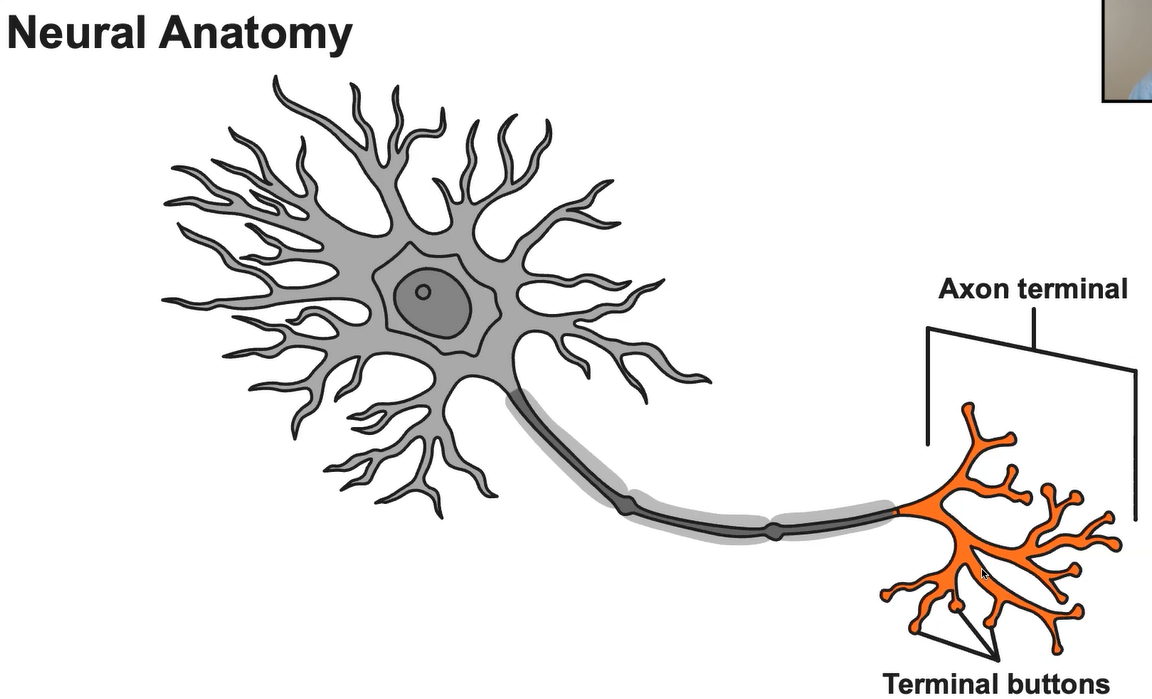
The Synaptic Gap:
After each terminal button, there is a synaptic gap
Neurotransmitters cross the gap and lock into the dendrite of the postsynaptic neuron
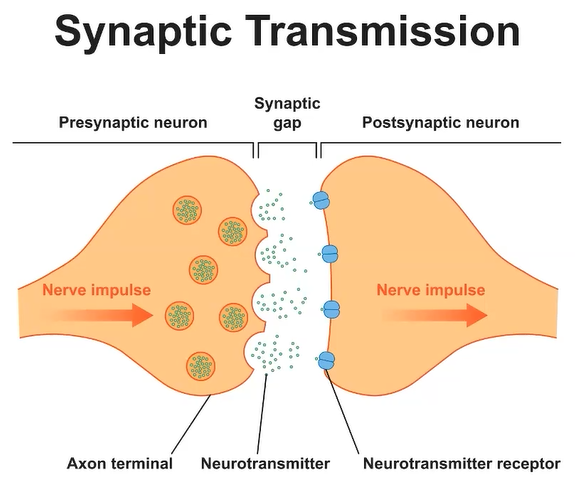
Gilal Cells:
Neurons aren’t the only ones that communicate, gila can too!
There are 900 billion Gilal Cells
Gila used to be thought of as just helper cells
They send and receive chemical signals to and from each other and to and from neurons
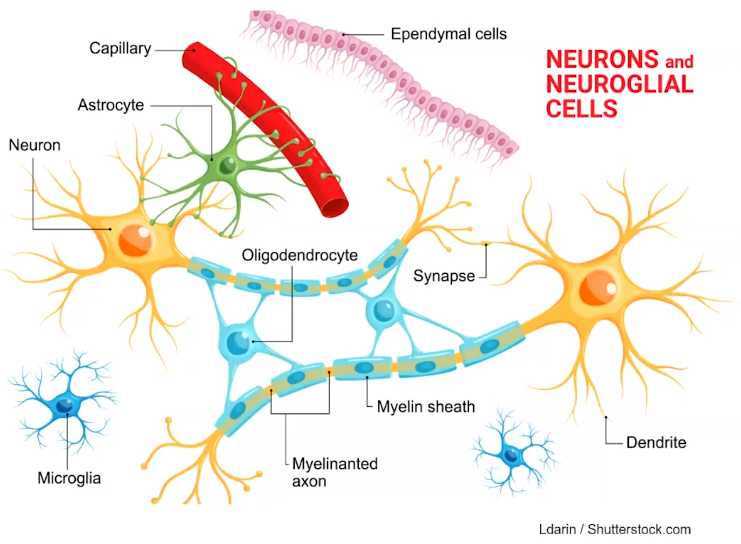
Types of neurons:
Motor Neuron
Sensory Neuron
Interneuron
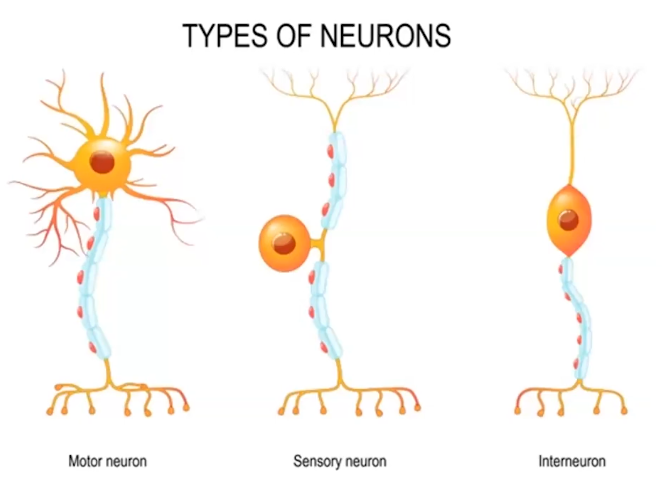
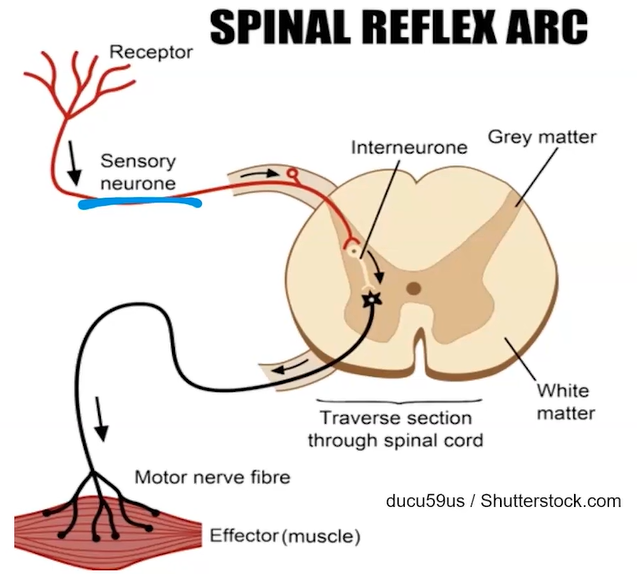
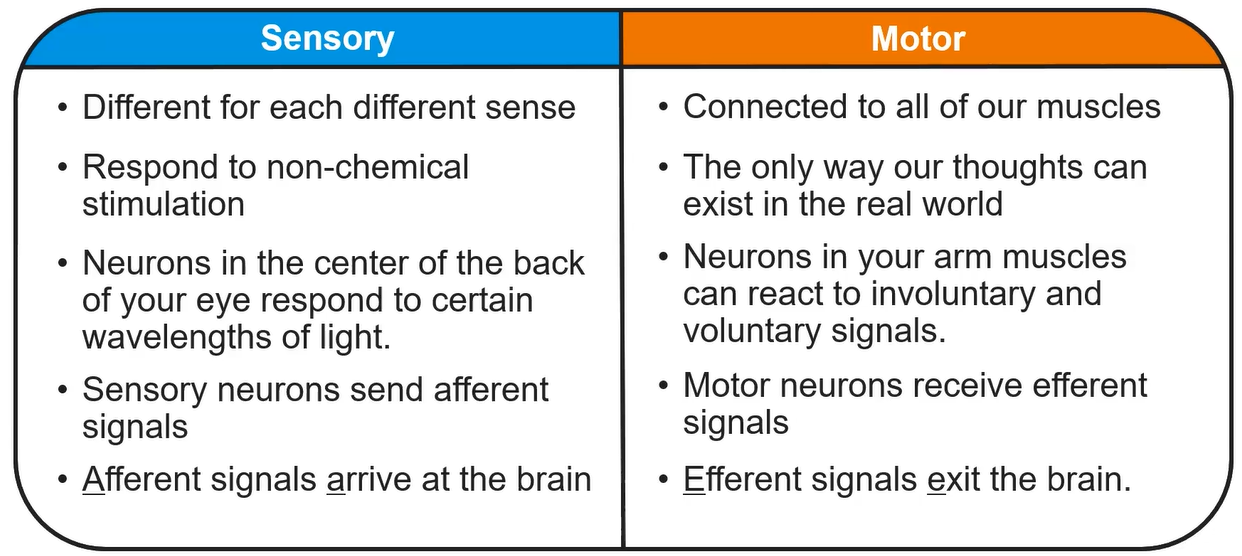
Sensory Neurons have Afferent signals that Arrive at the brain
Motor Neurons have Efferent signals that Exit the brain
Neural Firing
Neural Firing Vocabulary:
Resting Potential - Polarized
Po = Positive Outside
Firing Threshold - Minimum to fire a neuron
All or None Law - Once at threshold, neuron will fire, and it will fire with the same intensity every time
Action Potential - An electrical impulse that travels down the axon
Creates a positive electrical charge
Called depolarization
Refractory Period - Brief period where the neuron can’t fire again
Reuptake - The sending neuron recollects neurotranmitters
Excitatory → makes the next neuron more likely to fire
Inhibitory → makes the next neuron less likely to fire
Summary of Neural Firing:
Neurons fire when there is a shift in electrical energy → creating an action potential
When the action potential reaches the terminal buttons, neurotransmitters are released into the synapse
Neurotransmitters lock into the dendrites of the next neuron
Neurotransmitters can be excitatory or inhibitory
Neurotransmitters
Neurotransmitters in Brief:
Chemical messengers of the nervous system
Each neurotransmitter has a different impact on thinking and behavior
Excitatory or Inhibitory
The Different Neurotransmitters
Glutamate
GABA
Acetylcholine
Dopamine
Endorphins
Adrenaline
Noradrenaline
Serotonin
What do the Neurotransmitters do?
Glutamate
The memory neurotransmitter
Most common brain neurotransmitter
Excitatory
Enhances learning and memory by strengthening synaptic connections
GABA
The concentration neurotransmitter
Inhibitory
Associated with varios anxiety-related disorders
High levels improve focus
Low levels cause anxiety
Contributes to motor control and vision
Acetylcholine (Ach)
The learning neurotransmitter
All movement involves Ach
Involved in learning, memory, etc.
Dopamine
The pleasure neurotransmitter
Responsible for addictions
Endorphins
The euphoria neurotransmitter
Body’s natural painkiller
Adrenaline
Fight or Flight neurotransmitter
Produced during stressful or exciting situaltions
Increased adrenaline leads to increased heart rate and blood flow, a physical boost, and heightened awareness
Noradrenaline
The concetration neurotransmitter
Regulates arousal, attention, stress reactions, etc
Serotonin
The mood neurotransmitter
Contributes to mood, appetite, sleep, etc
Affected by exercise and light exposure
Helps with sleep cycle and digestive system regulation
Neurotransmitter Mneumonics:
Glutamate
Excitatory
Think how excited you would be if you were glued to your mate
GABA
The brakes to your CNS
Get
A
Brake
Adjustment
Acetylcholine
ACE is a perfect tennis thing, aka movement
ACE this exam, memory/learning
Dopamine
this is DOPE-amine
or
This is dopa-MINE
mine, mine, mine, because we are consumed with the pursuit of pleasure
Endorphins
Endorphins end pain
Noradrenaline
Related to adrenaline
Drugs and Chemical Influences on Neurons and Neural Firing
Psychoactive drugs and some other substances have a direct impact on several neurotransmitters at the synapse
Psychoactive drugs work as agonists or antagonists based on how they influence neural transmission
Blood-Brain Barrier - barrier that allows some chemicals to pass from the blood into the brain but prevents other chemical structures from entering
What do most psychoactive drugs have in common?
They alter mental states
Activate dopamine-producing neurons in the brain’s reward system
Increase in dopamine is associated with greater reward
Can lead to stronger desires to take the drug again
Can result in tolerance; needing increased amounts of the drug to create the orignial high or desired effect
Can lead to physical dependence; without drug withdrawal symptoms may appear
Effect of drug is dependent on what type of neurotransmitter it is influencing
Types of Psychoactive Drugs
Depressants
Slow CNS functions
Create drowsiness, sedation or sleep
Relieves anxiety
Combining depressants can be deadly
Opiates/Opioids
Agonist for endorphins
Heroin, Oxycodone, Fentanyl
Incredibly addictive
Powerful withdrawal symptoms
Stimulants
Activates Sympathetic NS
Increases brain activity
Arouses behavior
Increases mental alertness
Hallucinogens (Psychedelics)
Creates sensory and perceptual distortions, alters mood, and affects thinking
Agonists and Antagonists
Agonists - Enhances the actions of neurotransmitters
Direct Agonists
Mimic the neurotransmitter
Binds with the receptor of the next neuron
Indirect Agonists
Can block the reuptake of a neurotransmitter
Also known as reuptake inhibitors
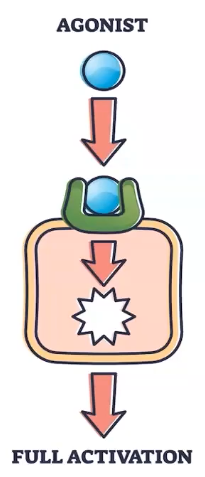
Antagonist - A substance that prevents the function of a neurotransmitter
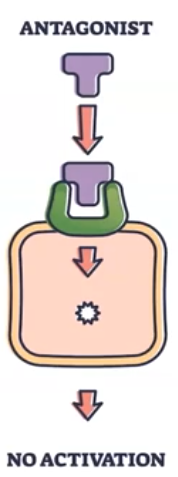
Takeaways
There are more than 10 times more gila than neurons
In addition to supporting neurons, gila can communicate with other cells, but not with electricity
Sensory neurons receive raw material from the body’s sense organs like free nerce endings in the epidermis
Motor neurons are connected to muscle fibers and can make the muscle contract
Each neuron has basic anatomy, every part has a special job tha allows neurons to easily and efficiently communicate with each other
Each time a neuron fires, there is a specific sequence of events that allows messages to be sent
There are many neurotransmitters in the human nervous system, each neurotransmitter plays a role in various cognitive and behavioral processes
Many chemicals work as agonists or antagonists; these changes can impact both cognitive and behavioral processes
1.4 The Brain
Hindbrain
Medulla Functions:
Basic autonomic functions
Heart Rate
Breathing
Blood Pressure
Reflexes
Swallowing
Sneezing
Vomiting
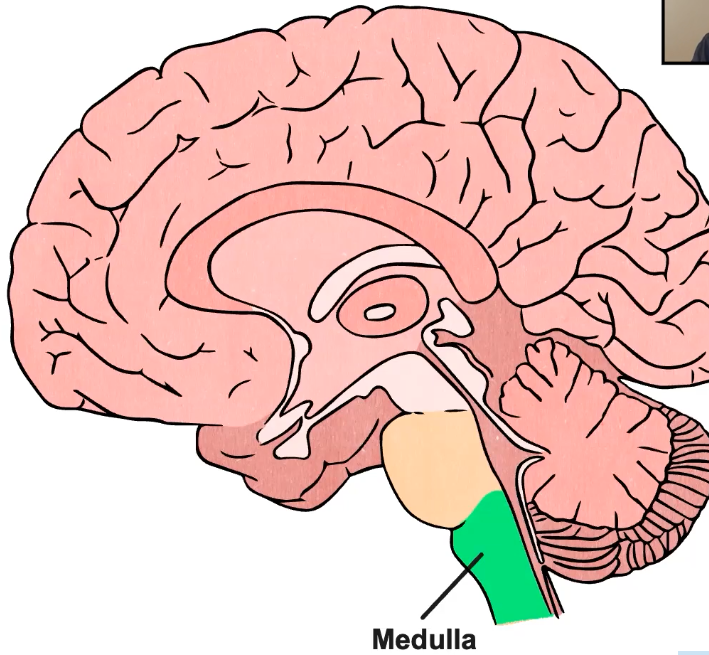
Pons Functions:
Bridge that connects the brainstem and cerebellum
Helps coordinate and integrate movements on each side of the body
Plays a role in sleep functions
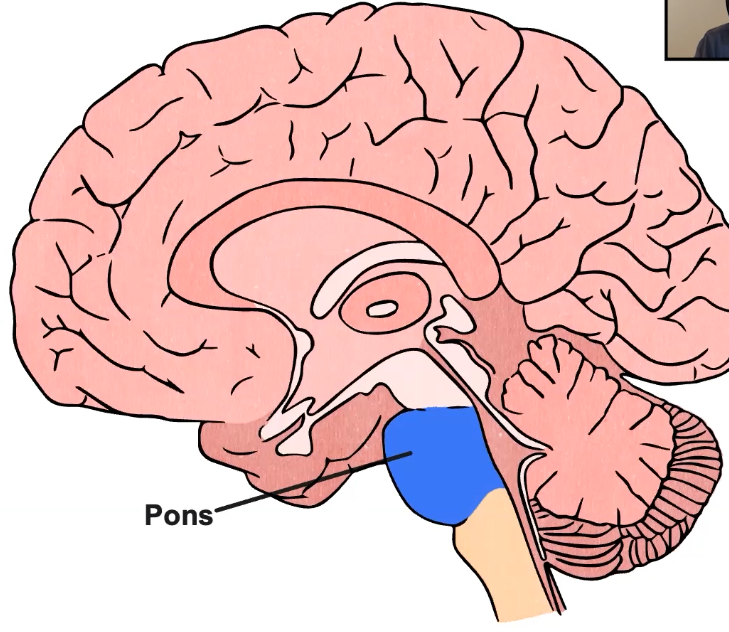
Reticular Activating System (RAS) - A network of nerve fibers involved in attention, arousal, and alertness
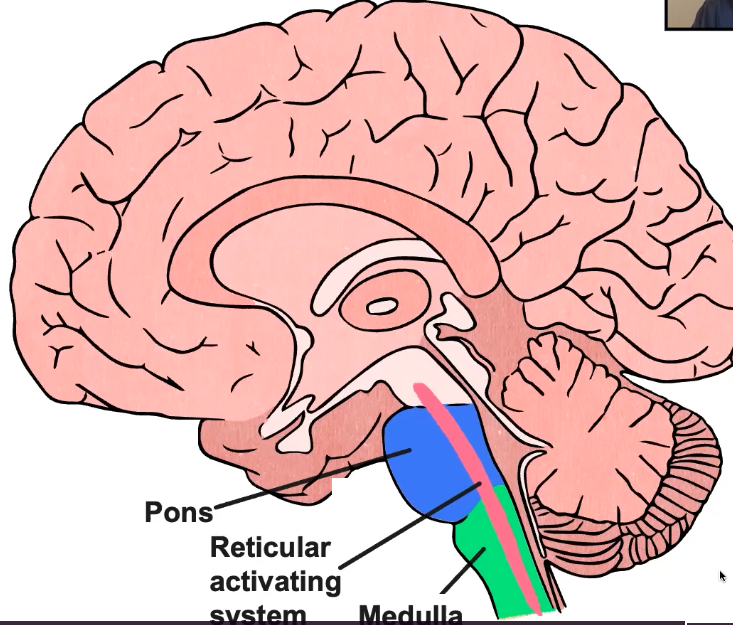
Cerebellum Functions:
Balance and eqilibrium
Coordinated sequences of movement
Implicit memory
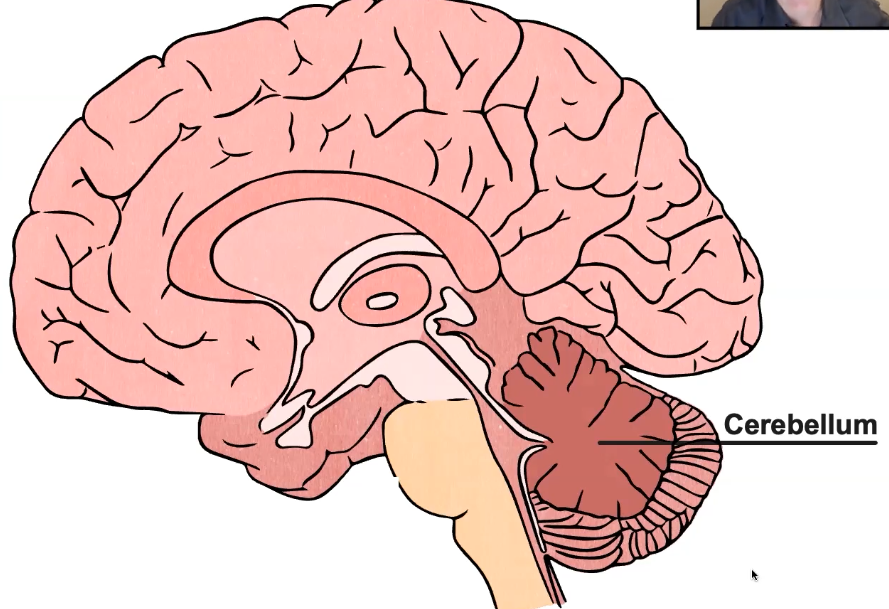
Midbrain
Midbrain Functions:
Nerve system connecting higher and lower portions of the brain
Relays info between the brain, the ears, and the eyes
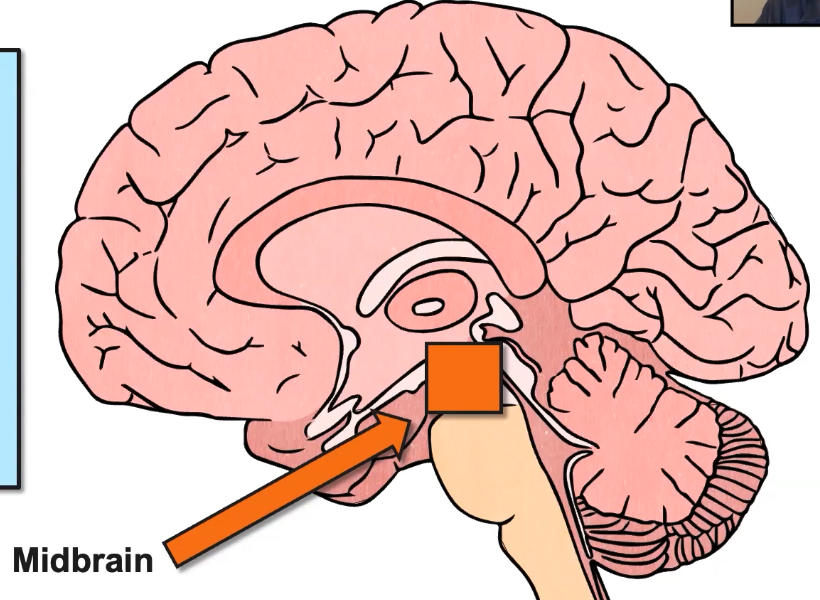
Limbic System
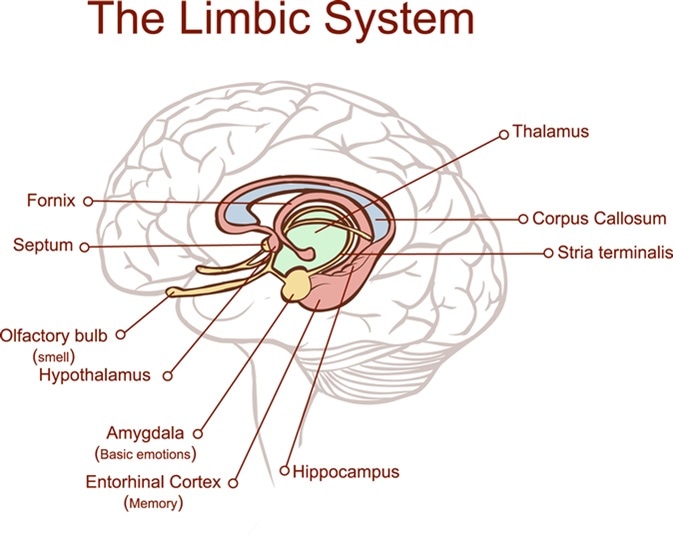
Thalamus Functions:
Sensory switchboard
Receives and sorts sensory information then sends it to the cortex for further interpretation
Smell is the only sensory exception
Hypothalamus Functions:
Fight ot flight
Feeding (Hunger)
Fornication/Fucking (Sex)
Amygdala
Anger
Aggression
Afraid (fear response)
Also helps ingrain highly emotional memories
Hippocampus
Converts short-term memory to long-term memory
Processes and retrieves declarative memory
Spatial relationship memories
Lobes
The brain consists of two hemispheres, each containing four lobes
F.P.O.T
Frontal
Parietal
Occipital
Temporal
Vocabulary:
Contralateral
Left hemisphere controls right side of body and vice versa
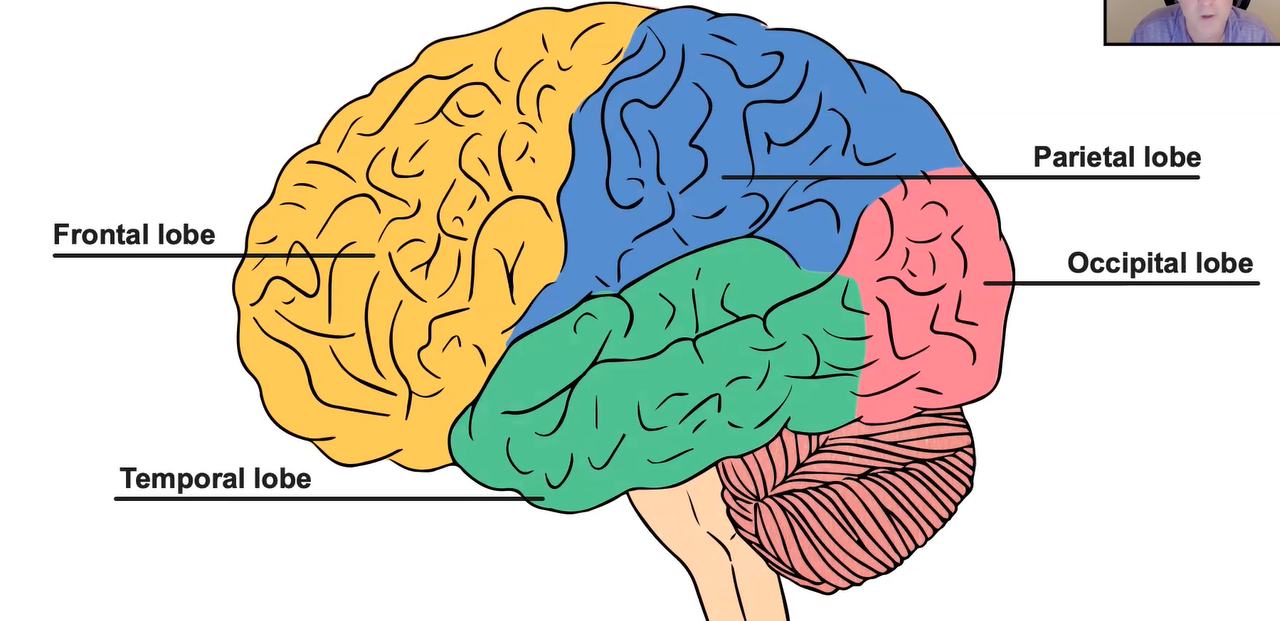
Frontal Lobe:
Prefrontal Cortex
Involved in highest level cognitive functions
Thinking, planning, decision-making, impulse control
Massive reorginization from 18-25 years of age
Motor Cortex
Involved in initiating voluntary movement
Contralateral
Body areas that make diverse and precise movements get more tissue on this strip of the brain
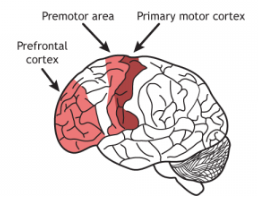
Parietal Lobe:
Somatosensory Cortex
Sense of touch
Contralateral
More sensitve body parts have more tissue devoted to them
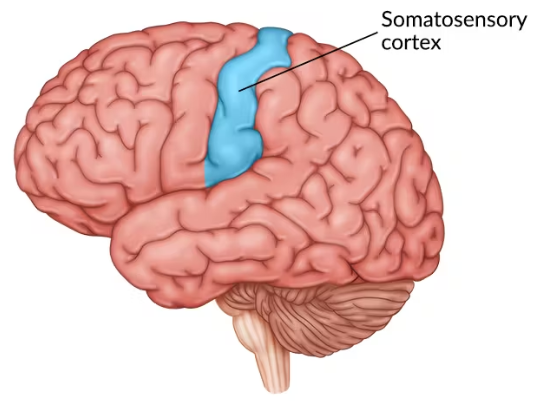
Occipital Lobe:
How your brain processes visual input
Primary Visual Cortex
Main part of brain that processes visual input
Damage can lead to blindness
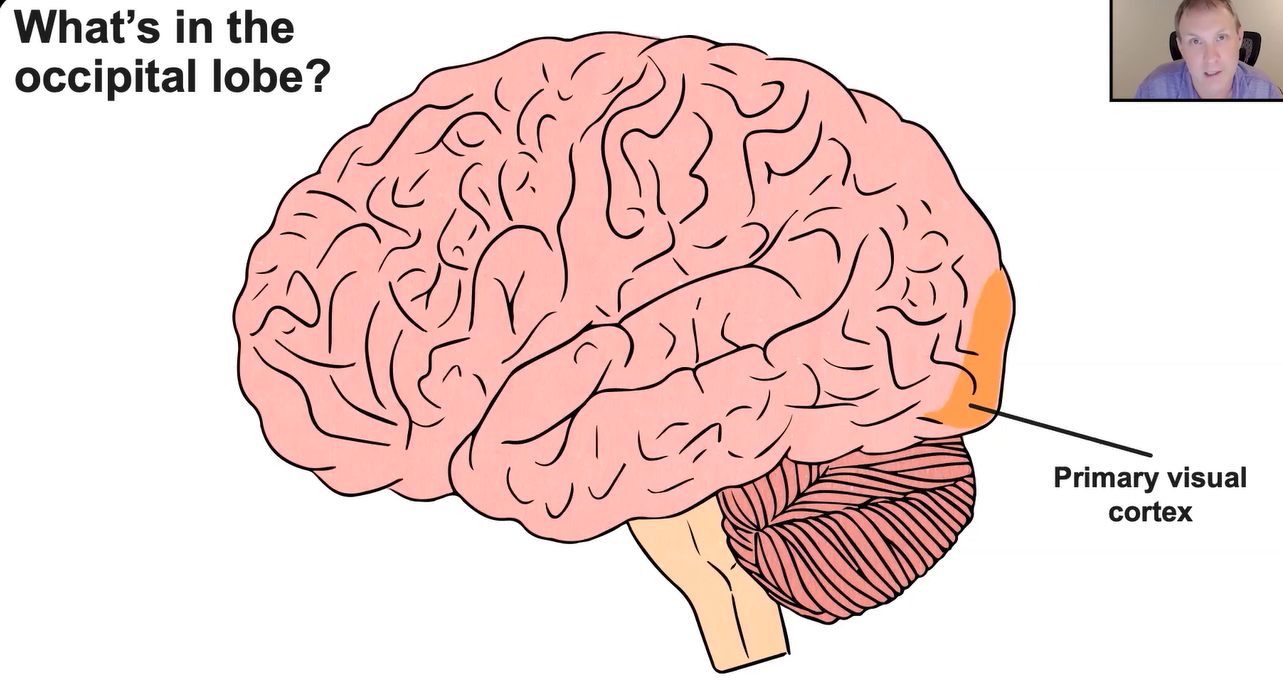
Temporal Lobe:
Processes auditory input
Primary Auditory Cortex
Main part of brain that processes auditory input
Auditory Association Cortex
Part of brain that perceives sound
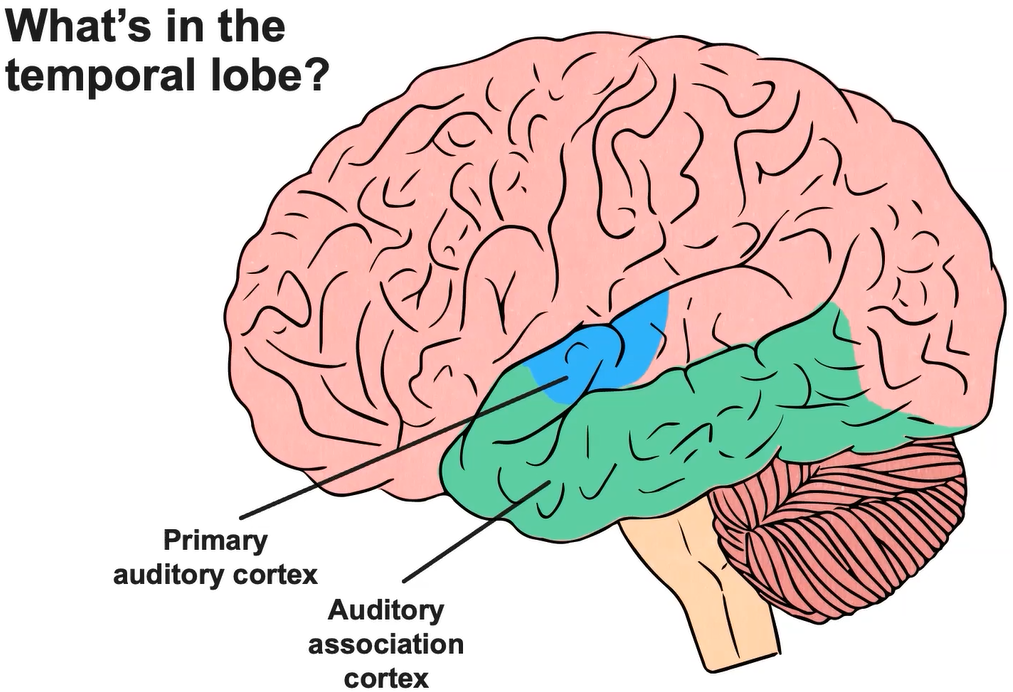
Other Brain Anatomy
Broca’s Area:
Involved iin expressive speech
Broca’s Aphasia (Expressive Aphasia)
Inability to express what one wants to say
Wernicke’s Area:
Involved in understanding language
Wernicke’s Aphasia
Inability to understand speech
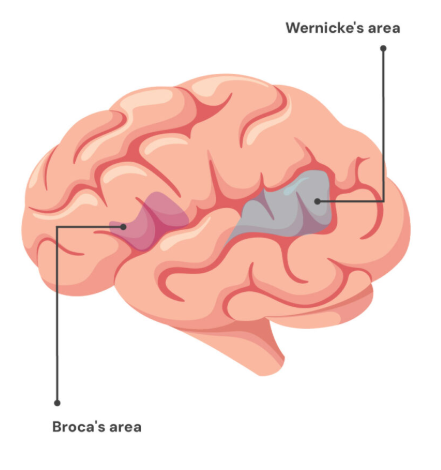
Corpus Callosum
Massive bundle of nerves connecting the two hemispheres
Allows constant communication between left and right hemispheres
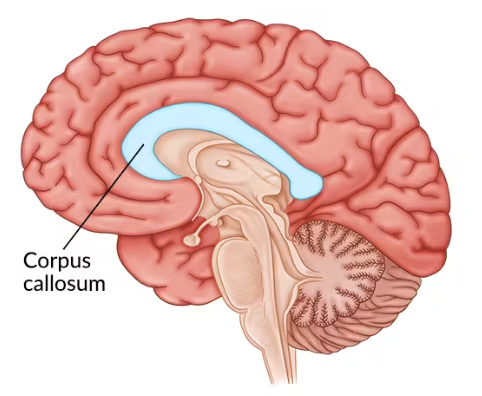
Brain Lateralization:
Some things only function in one hemisphere
Example: Language functions are lateralized to the left
Neuroplasticity
Throughout life, the brain can grow new connections and neurons
If the brain is injured, then it can rewire itself
The brain can shift function from damaged areas to undamaged areas
Examples:
Neurogenesis
Long-Term potentiation
Neurogenisis:
The creation of new cells
Exercise increases neurogenesis
Social isolation decreases neurogenesis
Long-Term Potentiation (LTP)
When a network of neurons fires together repeatedly, that neural pathway becomes smoother and more efficient
Changes in physical structure in response to learning, practice, and enviromental influences
LTP may represent the biological basis of learning
How do we know things about the brain?
Autopsy
Case Studies
Surgery (such as lesioning various parts of the brain)
Brain Scan Technology
EEG (Electroencephalograph)
Measures electrical activity coming off the surface of the brain
fMRI
shows both structure and function
measures changes in oxygen levels as brain areas activate and deactivate
Takeaways
Every area or structure of the brain has its own unique functions
The hindbrain coordinates functions that are fundamental to our survival, such as:
breathing
motor coordination
sleep
wakefulness
Limbic system is involved in
emotions
memory
integration of sensory info
motivation
etc.
There are four lobes in each hemisphere of the brain
Frontal
Parietal
Occipital
Temporal
Your RIght and Left hemispheres work together
The brain can rewire itself
1.5 Sleep
What happens during sleep?
There are cycles to sleep
A cycle normally lasts 90-120 minutes
Each sleep cycle involves 4 stages
NREM 1
NREM 2
NREM 3
REM
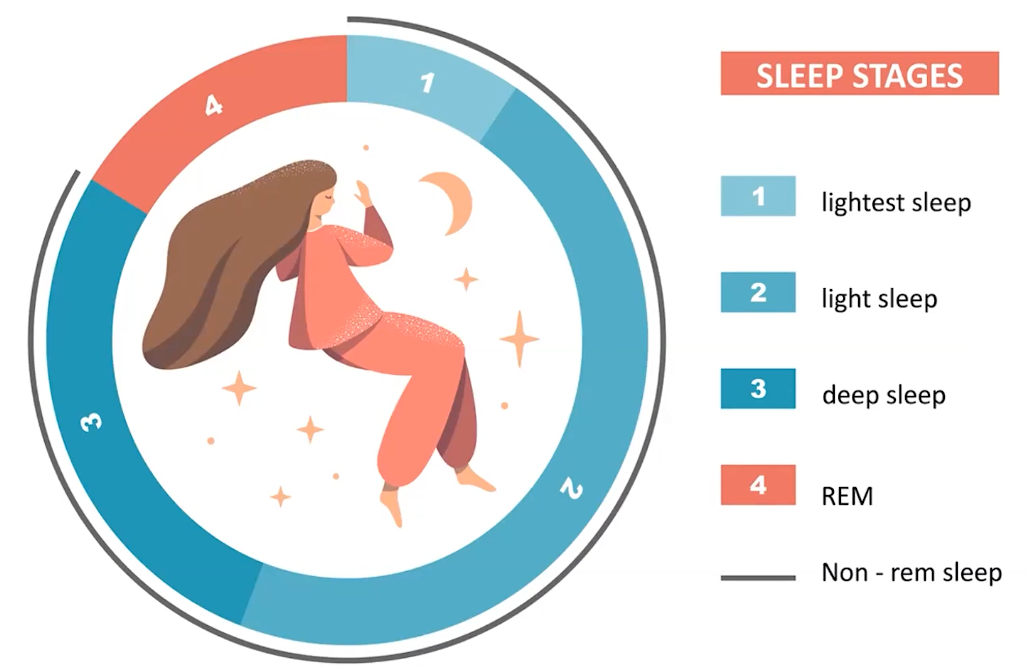
Each stage involves different psychological and physical changes
At first we transition down to deeper stages, where our brain and body become less responsive to to stimuli
Later in each cycle, we transition back up to more internally active stages
NREM 3 gets shorter throughout the night
REM gets longer throughout the night
Restoration Theory of Sleep
Bodies wear out during the day
Sleep…
repairs resources
reenergizes body
restore and repair muscles and brain tissue
supports growth
Memory Consolidation Theory
Memory consolidation occurs during REM
Studies have shown that people’s memory improves from the day prior when they have good sleep
restore memories from throughout the day
Energy Conservation Theory
Sleep protects us
Sleep helps anaimals adapt to their enviroment
Sleep deprived people struggle physically and cognitively
Dream Theories
Sigmund Freud’s The Interpretation of Dreams (1900)
Dreams are the road to the unconcious mind
Manifest content
Latent content
Biological & Information Processing Theories
Dreams sort out what happened during the day
Consolidates memories
Activation-Synthesis Model
REM helps preserve and develop neural connections
Makes sense out of random activations and weave together a storyline that becomes a dream
Sleep Disorders
Insomnia - most common sleep disorder
Narcolepsy - involves sudden sleep attacks
Sleep Apnea - breathing intermittently stops throughout the night
Night Terrors - intense fear during NREM sleep
Somnambulism - sleep walking
Bruxism - Involuntary teeth grinding
Takeaways
90-minute cycles
Four cycles of sleep
Each of the major theories explains sleep
Restoration
Memory Consolidation
Energy conservation
There are many sleep disorders that interupt sleeping
1.6 Sensation
Eyes:
Anatomy
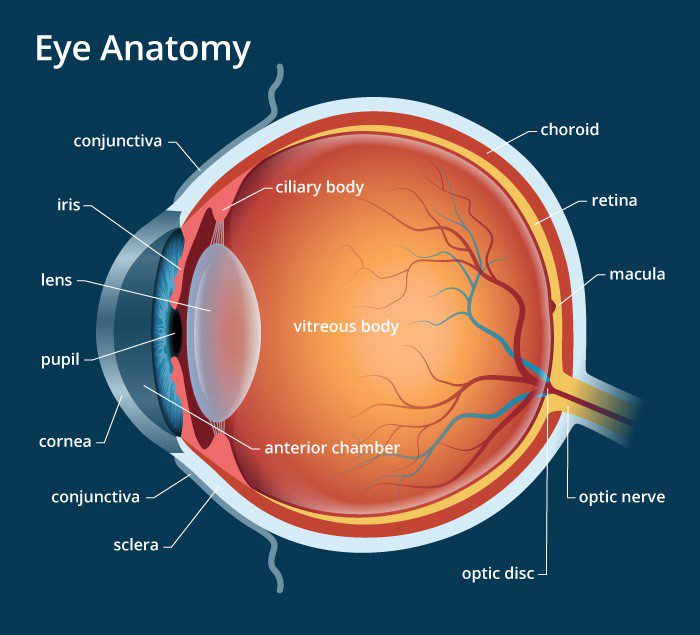
Sclera - white part of eye; shell
Cornea - front of eye; windshield
Lens - Clear, flexible “M&M” that bends depending on the distance of the object you are looking at
Iris - Color part of eye
Pupil - light hole
Retina - Rods, black & white, peripheral vision; movie screen
Fovea: Focus of the “movie screen”; Center, Cones, Color
Blind Spot - The area where the optic nerve enters the eye
Sensing Color
Most color blindness happens in the eye not the brain
Most color blindness means difficulty distinguishing between certain colors
Males are more likely to be color blind
Color Vision Theories
Trichromatic Theory
Works for eyes
Sensation - objectively observed and measured
Three types of cones in the fovea
S-cone = blue
M-cone = green
L-cone = red
Opponent Processing Theory
Works for the brain
Perception - no one can independently measure what another person perceives
Afterimage
Happens in the mind
Doesn’t actally exist
Need a “before” image before the after image
Ears
Anatomy
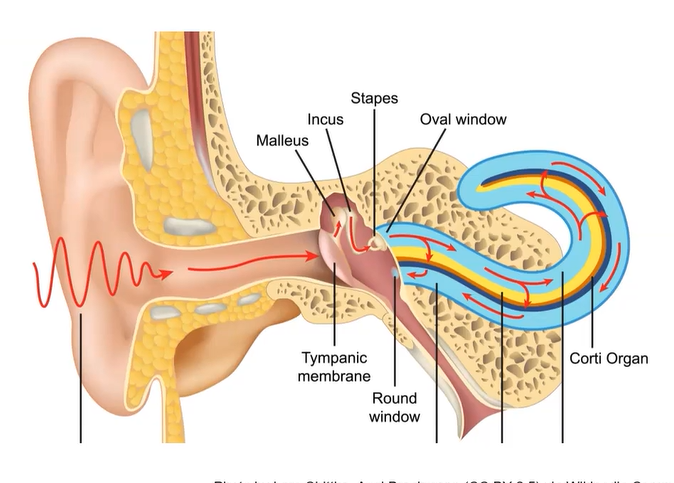
Outer Ear:
Pinna
Thing you put your glasses on
Acts like a satellite dish to help focus sound waves into the ear hole
Ear Canal
Carries sound to ear drum
Middle Ear
Ear Drum: Tympanic Membrane
Attached to the Ear Drum is…
Malleus
Incus
Stapes
Inner Ear
Cochlea
About the size of a pea
Snail shell shaped
Filled with fluid
Corti
Small organ
Membrane with tiny hairs (Cilia) sticking out of it
How much the cilia is moved, tells the nerve to fire at a certain rate
The Stapes bangs against the oval window
Which sets up a wave in the fluid inside the cochlea
Sensing Sound
Theories of Hearing
Place Theory
When a wave of cochlear fluid crashes on the corti, cilia are stimulated
Nerve cell attached to the cilia root sends a signal to the brain
Brain knows if certain cilia are stimulated
Should be interpreted as different pitch
Frequency Theory
Temporal coding
Time is important
Frequency of nerural signals tells the brain which pitch to interpret
Auditory Disparity (Difference)
Loudness
If a sound is on a certain side, it will be louder in that ear
People usually don’t consciously notice
Brain automatically does!
Head might muffle some of the sound that goes to the other ear
Arrival Times
If a sound is on a certain side, it will reach that ear faster
People usually don’t consciously notice
Brain automatically does
Hearing Impairment
Conduction Deafness
Something is not functioning in the outer or inner ear
Vibrations aren’t making it to the cochlea
Swelling
Blockage
Damage
Treatment: medicine and/or surgery
Neurological Deafness
Cochlea does not send correct signals to the brain
Inherited disease
Over-use of loud noises
Regular long use of normal noises
Treatment: Hearing aid, cochlear implant
Smells
Smell is known as olfaction
Odorant molecules bind with receptor sites in olfactory receptor neurons
Smell bypasses the thalamus and goes directly to the olfactory bulb
From the olfactory bulb, the smell goes to the frontal lobe, amygdala, hippocampus, and other structures
Smell is most likely our oldest sense
It’s directly tied to emotional and memory structures and circuits in the brain
Taste
Sense is known as gustation
Bumps on tongue are called papilla
Taste buds are found on those papilla
Each papilla has hundred of taste buds
Young kids have more taste buds
We lose taste buds as we age
Spatial Awareness
Embodied Cognition - Body isn’t just a dumb collector of info
Feedback Loop
Body gives the brain info
Brain tells body info
Body adjusts according to info from brains
Kinesthetic Awareness - awareness of how your body moves
Vestibular System
creates sense of balance
attached to the cochlea, there are 3 semi-circular canals, of which have fluid in them
based on the position of the fluid, your brain knows the position of your body
Gate Control Theory of Pain - limit to how much pain you can feel at a time
Adjustments to Sensation in Psychology
1. Sensory Adaptation
Definition: A decrease in sensitivity to a constant or unchanging stimulus over time.
Why it happens: Sensory receptors become less responsive when stimuli are constant, allowing us to focus on changes in the environment.
Examples:
Not noticing the smell of your house after being in it for a while.
Getting used to cold water after being in a pool for a few minutes.
Stop feeling your clothes on your skin after you’ve had them on for a while.
2. Habituation
Definition: A psychological learning process where there is a decrease in response to a stimulus after repeated exposure.
Difference from sensory adaptation:
Habituation happens in the brain — it’s about learning to ignore repeated stimuli.
Sensory adaptation happens at the sensory receptor level.
Examples:
Ignoring the sound of a ticking clock.
No longer noticing a train that passes by your house every day.
3. Selective Attention
Definition: The focusing of conscious awareness on a particular stimulus while ignoring others.
Why it matters: Helps us avoid sensory overload by tuning out irrelevant information.
Example:
The cocktail party effect: Being able to focus on one conversation in a noisy room.
4. Perceptual Set
Definition: A mental predisposition to perceive things a certain way based on expectations, experiences, and context.
Influences how we interpret sensory information.
Example:
If you expect a drink to be sour, you might perceive it that way even if it isn’t.